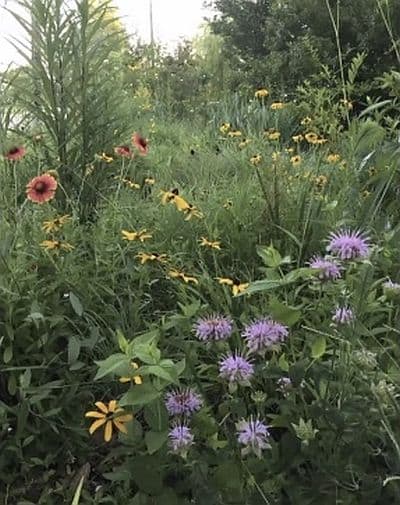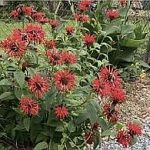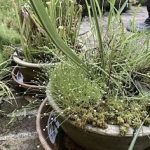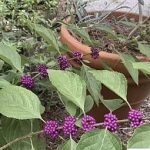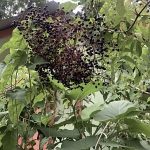(Image above: Blanket flower, black eyed Susan and purple manarda)
LA Certified Habitat Program
he Louisiana native plant society or LNPS sponsors this statewide program. Tammany Baumgarten is the President of the Native Plant Initiative which certifies Habitat gardens. She is a Louisiana Master Gardener and shared her knowledge of the program as well and how to establish a native habitat garden.
Native gardens need native plants to support insects which supports birds, bees, butterflies and other beneficial wildlife. Non-native plants do not serve as well as native plants. Native plants require less maintenance, less fertilizer and less water than non-natives. Gardens/yards should serve as part of our ecosystem and support our local flora and fauna. We want to bring habitat close to our homes, sharing our space, thus bringing satisfaction to our lives.
Tammany reminded us we have fewer and less habitat from years ago. We can do our part. Research says butterflies specialize on certain plants. Bees specialize on certain types of pollen. We should have as wide a diversity of native plants as possible, with different leaf textures and forms to support and protect wildlife. Layering of plants, ground covers, using pots and vines brings diversity and density to the Habitat garden.
Habitat can be anywhere, in a single pot, at your office. Plant tough natives in the Hellstrip; the narrow area between the sidewalk and the street. Reduce or eliminate lawns. Lawns need fertilizer which runs off into our lakes and streams harming aquatic life, people and pets. Raingardens catch water. Use native vines, on an obelisk placed in a pot. Incorporate natives that produce berries, native trees such as oak trees. Native habitat is lower maintenance, don’t deadhead as much, leave the leaves and logs to encourage and protect wildlife.
(Images above: [left] Monarda; [left center] Bog plants; [right center] American Beautyberry; [right] Elderberry)
(Photos by Tammany Baumgarten)

By Karen Blackburn

